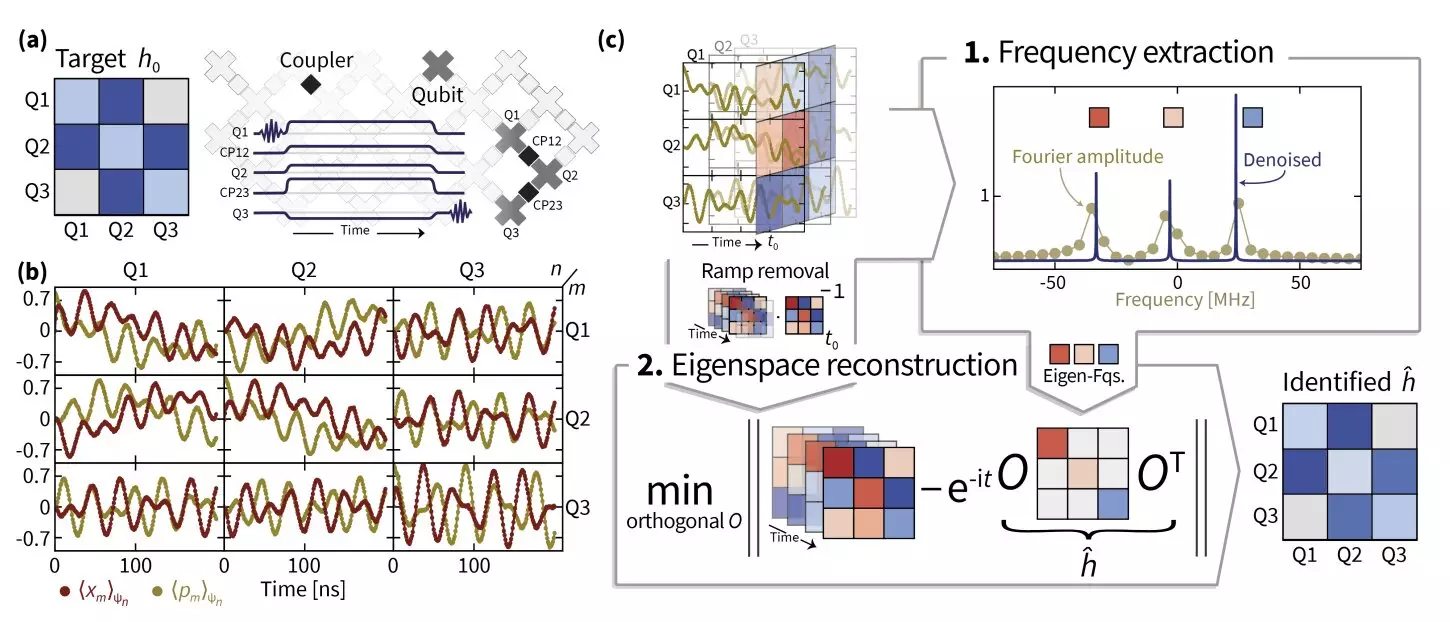In the ever-evolving field of quantum computing, understanding the intricacies of quantum systems is paramount. Recent collaborative efforts among researchers from Freie Universität Berlin, the University of Maryland, Google AI, Abu Dhabi, and NIST have borne significant fruit in the pursuit of accurately estimating the free Hamiltonian parameters of bosonic excitations within a superconducting quantum simulator. Their innovative protocols, explored in a paper pre-published on arXiv, provide promising avenues for advancing quantum simulations that could far outstrip the capabilities of classical computing systems.
The catalyst for this investigative endeavor originated from a call during a conference in Brazil, as Jens Eisert, the lead author, recounted. His friends from the Google AI team were grappling with the complexities of calibrating their Sycamore superconducting quantum chip. The challenge lay in applying Hamiltonian learning techniques, a task fraught with difficulties. Initially optimistic, Eisert quickly recognized that accurately recovering the Hamiltonian operator’s frequencies would not be as straightforward as he had assumed. This realization sparked a collaboration that would traverse years of detailed study and experimentation.
Eisert enlisted the help of promising Ph.D. students, Ingo Roth and Dominik Hangleiter, whose combined expertise catalyzed the development of an innovative solution using superresolution principles. Despite their initial progress, the journey extended longer than imagined, as real-world data presented unforeseen challenges. The eventual addition of Ph.D. student Jonas Fuksa and the continuous support from experimental lead Pedram Roushan allowed the team to refine their methods, ultimately leading to substantial breakthroughs.
The researchers employed multi-faceted methodologies to elucidate the Hamiltonian dynamics of the quantum simulator. At the core of their approach was superresolution, which amplifies the resolution of eigenvalue estimations to pinpoint the Hamiltonian frequencies with heightened accuracy. Complementing this was the application of manifold optimization, a sophisticated algorithmic technique designated for complex systems wherein variables reside on a manifold rather than a conventional Euclidean space.
Eisert’s group ultimately devised a method dubbed TensorEsprit, designed to enhance signal resolution and facilitate recovery of Hamiltonian parameters across multiple superconducting qubits. The ambitious scope of their endeavor was to establish robust discoveries that retained effectiveness even with larger quantum systems. However, they encountered an instrumental realization: the intricate nature of switching Hamiltonian processes, inherently prone to imperfections, necessitated meticulous consideration.
Preliminary findings from Eisert and his team indicate that their techniques possess both scalability and robustness, heralding potential applications across extensive quantum processors. This progress not only deepens the understanding of Hamiltonians but also lays the groundwork for new methodologies in characterizing quantum processors effectively. They now seek to apply their methods to interacting quantum systems and investigate tensor networks in the context of cold atomic systems, inspired by the foundational work of physicist Immanuel Bloch.
A key insight gleaned from this research is the persistent challenge surrounding the characterization of Hamiltonian operators. Often presumed to be known, these operators are crucial for predictive power in quantum mechanics, yet probing their true nature remains an ongoing challenge in academic discourse. Eisert’s team acknowledges that practical data is the only tangible output of experiments, underscoring the necessity of accurately discerning Hamiltonians to derive meaningful conclusions.
Through their pioneering research, the group plays a pivotal role in fostering a deeper conceptual understanding of Hamiltonian dynamics. By enhancing the capacity for characterizing analog quantum simulators, they may unlock new potentials for executing high-precision quantum simulations. The implications of analog quantum simulation extend into the realm of complex quantum systems, enabling researchers to replicate and analyze intricate properties under meticulously controlled laboratory conditions.
As the landscape of quantum technology continues to unfold, the confluence of theoretical insights and practical applications will undoubtedly shape the future. Eisert and his colleagues aim to contribute not only to theoretical frameworks but also to tangible advancements in quantum technologies themselves. The intersection of academic inquiry and real-world application positions this team to influence a transformative age in quantum mechanics, where understanding the delicate dance of Hamiltonians might yield unprecedented breakthroughs.
The developments presented by this research group illuminate the complex interplay between theory and practice in quantum science. As they stride forward, the promise of a deeper understanding of Hamiltonian parameters seems not just feasible, but imminent, potentially captivating the imaginations and aspirations of quantum physicists and technologists for years to come.


Leave a Reply